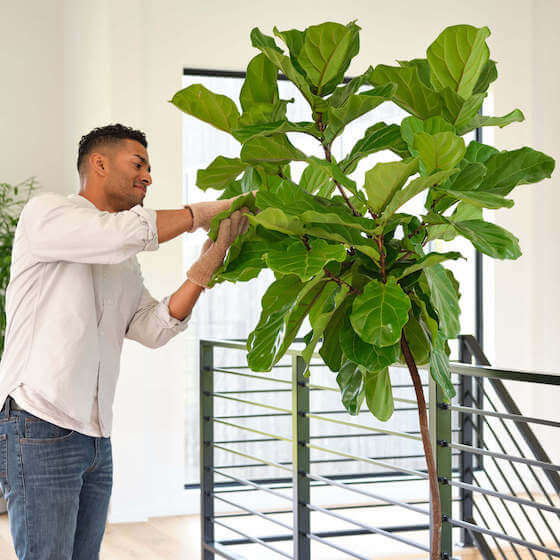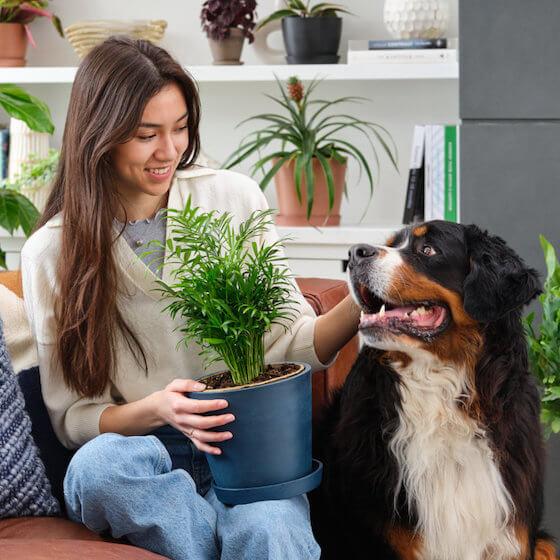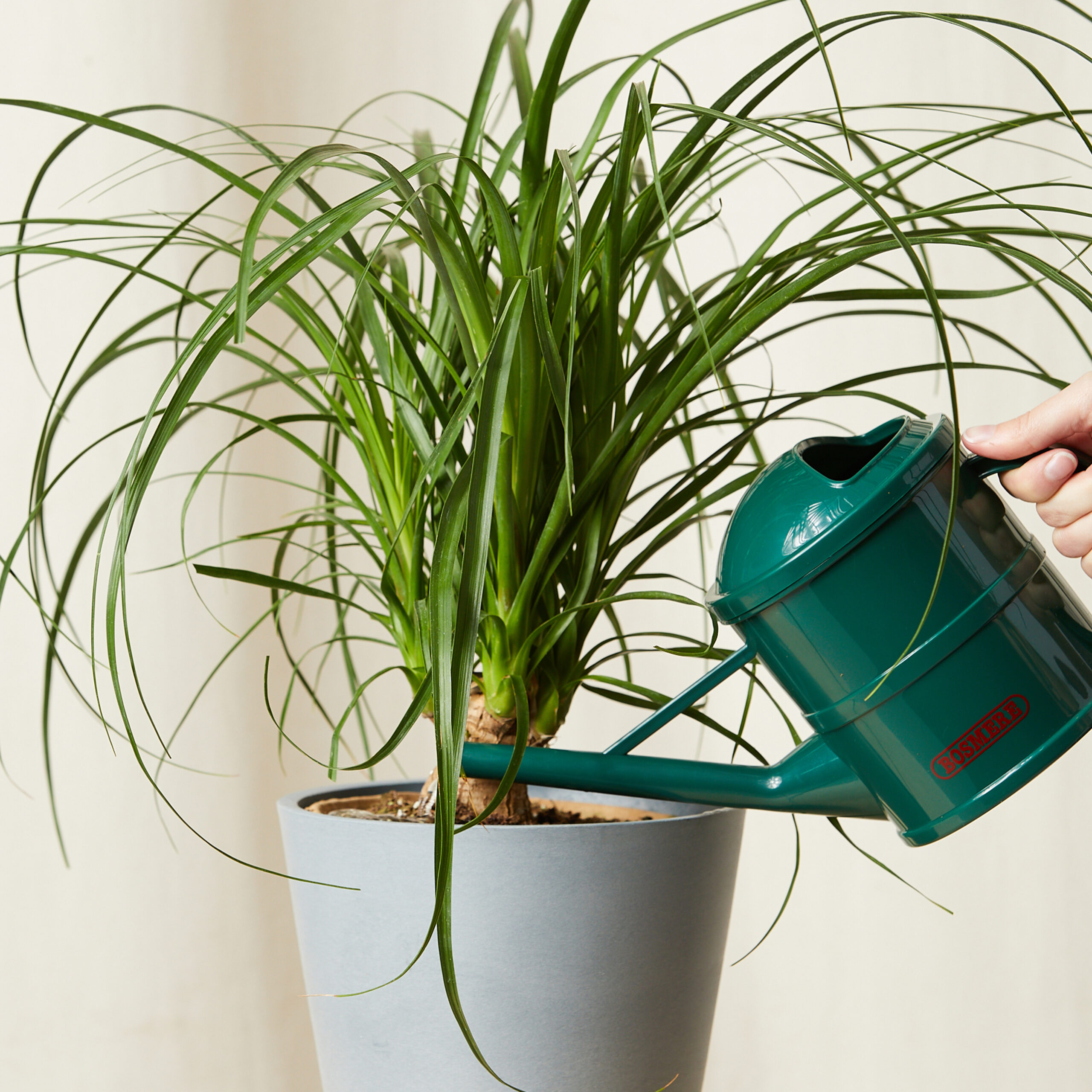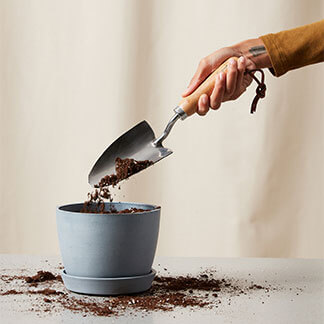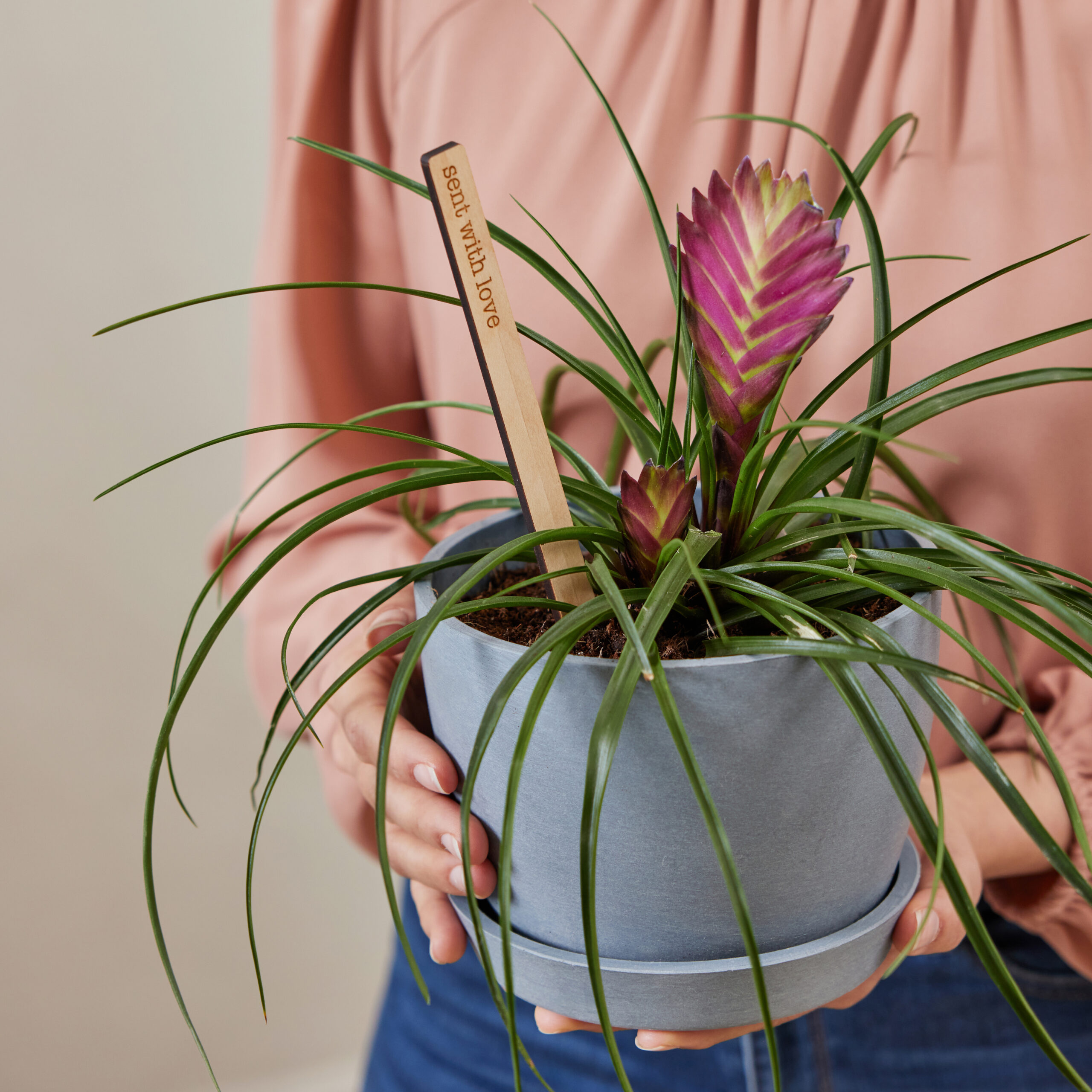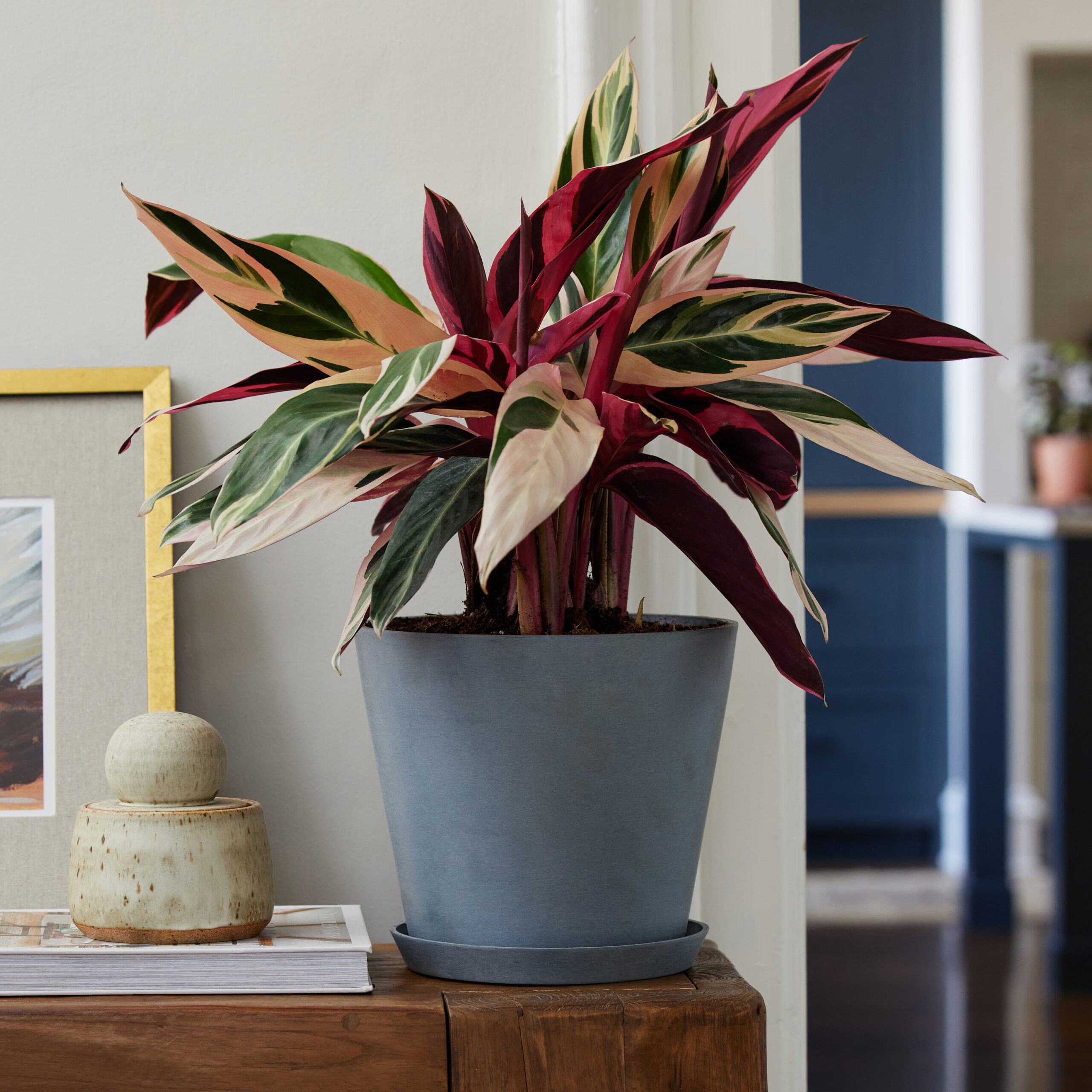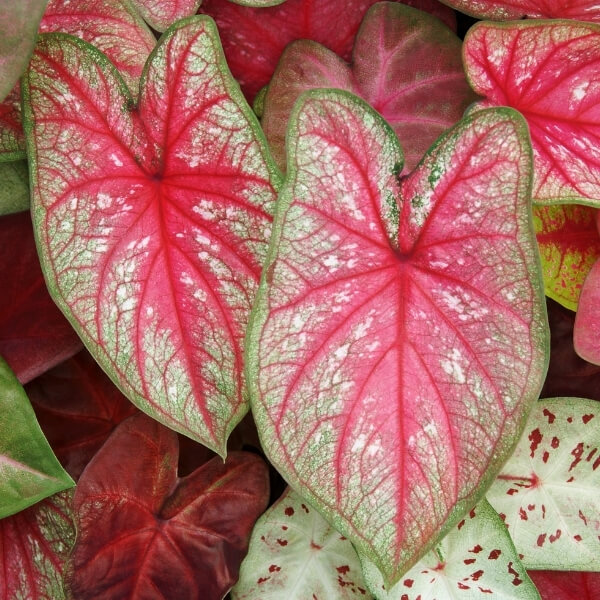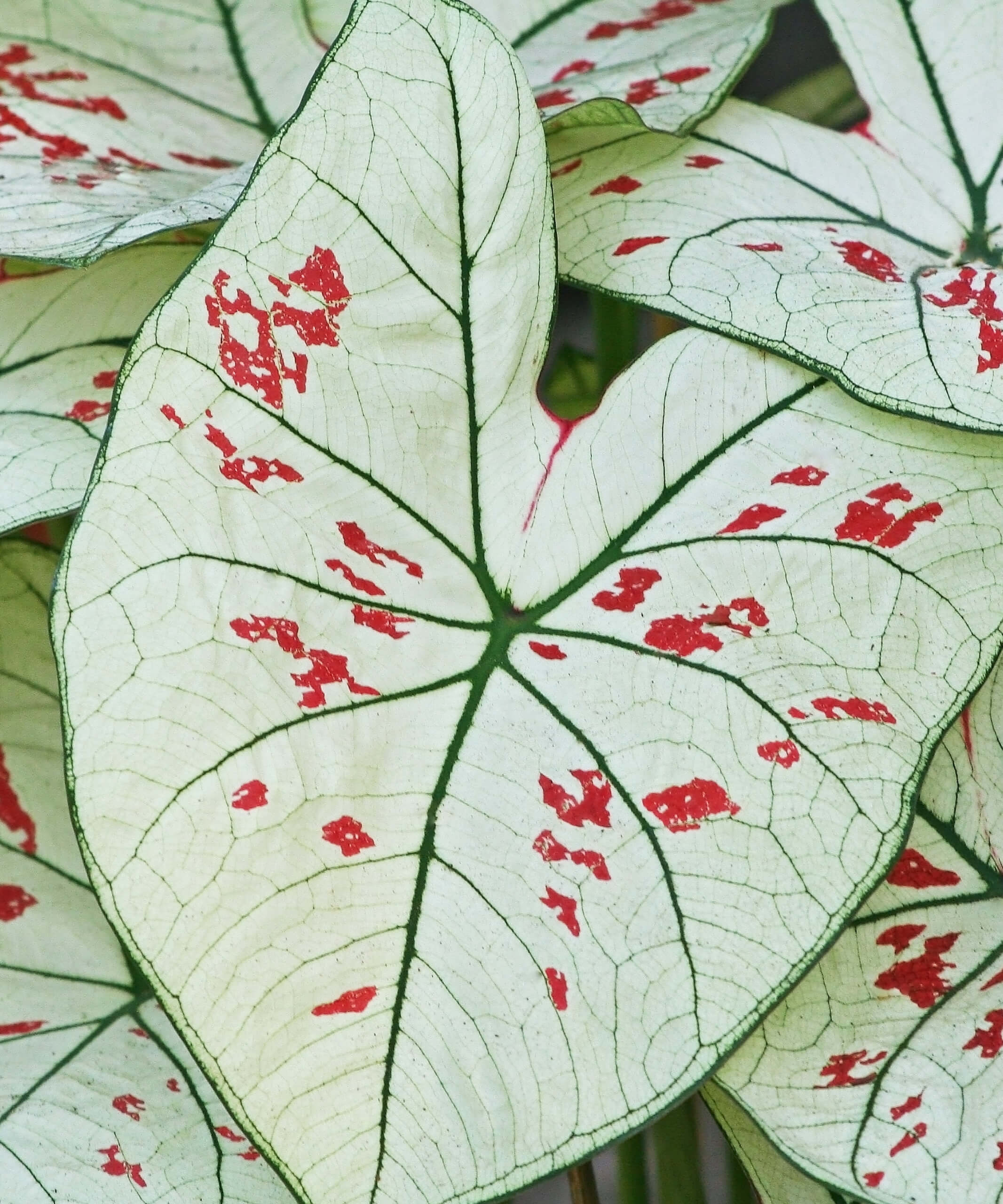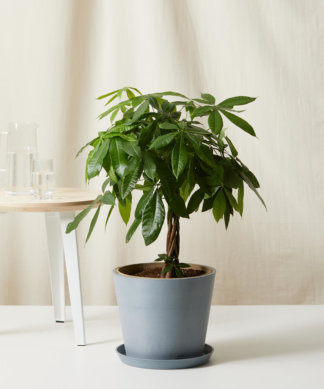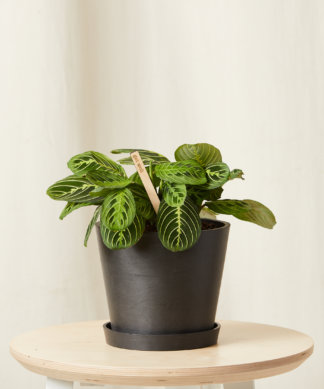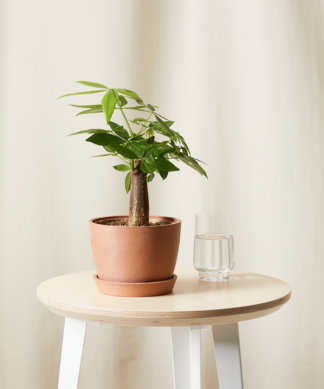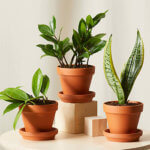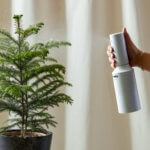How to care for your Caladium
Use these instructions to care for a Caladium. This guide will tell you how to water a Caladium; its light, temperature, humidity preferences and any additional care it might need to help it grow.
Caladium
Caladiums flourish in indirect light. Full sun exposure scorches the leaves, so keeping the plant close to a window but away from the intense noon and afternoon sunlight works best.
Your Caladium thrives in moist soil, but be careful not to overwater since this causes root rotting. To find out if your plant is thirsty, check to see if 25% of the soil’s surface is dry. If so, you can water the Caladium while ensuring proper drainage and emptying out any excess liquid. During the winter, you’ll water your plant sparingly or not at all until the leaves start sprouting again in the spring.
Caladium care also requires a moist atmosphere. Ideally, the Caladium grows best when the humidity level reaches 60-75%. So if needed, you can place a small humidifier close by or use a pebble tray filled with water. Grouping your Caladium with other moisture-loving plants also helps. Plus, you can mist the leaves on a regular basis. Just be careful that the soil doesn’t become water-logged.
Keeping a warm environment between 60℉-80℉ is vital to your Caladium’s health. Hence, you’ll need to place your plant away from drafty windows and doors and air vents. Also, try to avoid sudden changes in room temperature.
Monthly feedings during the spring and summer provide optimal nutrition for your plant. As part of your Caladium care regimen, dilute a liquid fertilizer at half the strength. Before feeding your plant, check the soil’s dryness because you should never apply the fertilizer on a dry surface. During the fall and winter, you stop fertilizing the plant.
The Caladium is toxic for humans and pets. Ingesting causes mouth and stomach irritation.
Even indoors, your caladium will most likely go into a dormant stage after producing new leaves. This is the normal lifecycle of this tuberous plant. Cut back on watering when old leaves start to die back in the fall, and to encourage the plant to come out of dormancy in the spring, you’ll want to water, apply a weak fertilizer, and keep the caladium in a warm location. Prune off the old discoloring leaves as they appear.
